Nettle Slurry: What is it? How to prepare it? How do we use it?
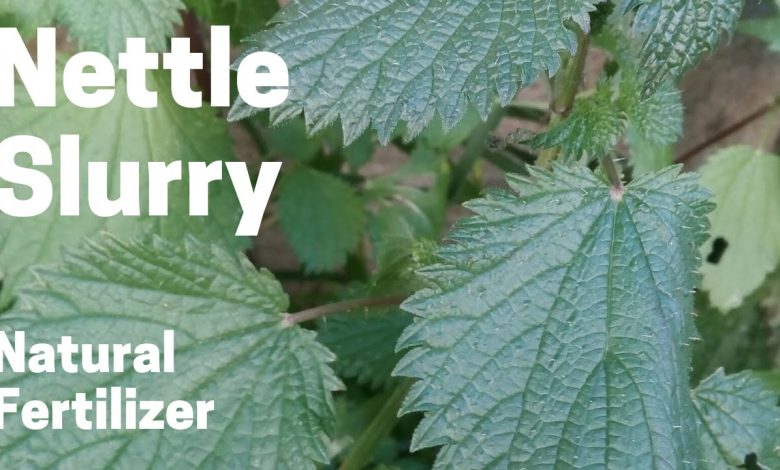
Nettle slurry is one of the most used remedies in organic farming, since it is a mixture solely based on nettle and, therefore, devoid of any chemical product.Completely natural and ecological.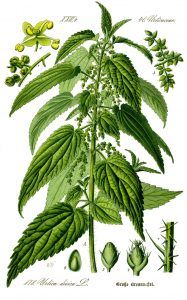
Due to its properties, it works effectivelyas a fertilizer and also as an insecticide, which makes it a great alternative for both domestic and industrial crops.
It is rich in nitrogen and other micronutrients, and contains hormones that stimulate and regulate the growth of leaves, roots, and stems in crops. As an insecticide, it works very well against some pests, since it not only eliminates them, but also drives them away, thus becoming a preventive remedy.
In addition, it helps fight fungi that are quite common in crops, such as mildew and powdery mildew.
Its preparation is quite simple and does not require much time. Just follow the instructions that we present in this article andstart making your own nettle slurry.
88 Reviews VERMIORGANIC Organic Nettle Slurry, 1L. Insecticide, Fungicide, Acaricide to Control Fungi and to Correct Iron Chlorosis.
- With regular application, it improves soil structure and water holding capacity.
- Greater root development
- Pest reduction
- It facilitates the propagation and maintenance of the microorganisms necessary for a healthy soil.
€14.90 View on Amazon Prices with VAT without transport
Last updated on 2022-07-26 / Affiliate Links / Affiliate API Images
What is nettle slurry?

Stinging nettle, from the Latin urtica, is one of the most common weeds. However, it is a plant that can be used to our advantage, due to the excellent benefits it brings to crops.
It is a bushy plant, whose main characteristic is that it is covered by fine hairs that, when in contact with the skin, produce lesions thatcause itching, hives and itching.
These reactions occur because the plant’s stinging hairs, when touched, release a content of formic acid, resin, histamine, and an unknown protein substance. The stinging is mainly caused by formic acid, which is present in large quantities.
It must be said that the hairs are too fragile and can break with the simplest touch. For the same reason, when handling this herb, it is best toprotect your body very well, especially your hands.
To make nettle slurry, all you need is good quality water, preferably from rain and nettles.
Now, if you want to save yourself the hard work, but above all the bad smell, you will like to know that, luckily, nettle slurry can be purchased ready to dilute. You can find it at online stores or any specialty garden store.
Nettle slurry has also been used in biodynamic agriculture.
86 Reviews VERMIORGANIC Organic Nettle Slurry, 5L. Insecticide, Fungicide, Acaricide to Control Fungi and to Correct Iron Chlorosis.
- With regular application, it improves soil structure and water holding capacity.
- Greater root development
- Pest reduction
- It facilitates the propagation and maintenance of the microorganisms necessary for a healthy soil.
€28.90 View on Amazon Prices with VAT without transport
Last updated on 2022-07-26 / Affiliate Links / Affiliate API Images
What are your benefits?
There are many contributions of nettle slurry to crops. In general, we have:
- It contains numerous minerals and micronutrients essential for the development of plants, including iron, phosphorus, magnesium, calcium, silicon, vitamins A and C.
- The silica it contains strengthens crops, making them more resistant to fungi such as powdery mildew, rust, and mildew.
- They contain hormones that regulate growth in the roots, leaves, flowers and fruits, and protect plants against attacks by parasites or diseases.
- It is an excellent foliar fertilizer. Foliar fertilization is used to correct nutritional deficiencies in crops. It results from the application of nutrients in the aerial parts of plants, which can be applied in water-soluble form.
Here are some more benefits of nettle slurry:
- Prevents wilting and chlorosis of the leaves.
- Promotes seed germination and flowering.
- Stimulates the growth and development of crops.
- It reactivates the compost, since it favors the decomposition of organic matter.
- Accelerates the vermicomposting process, as it promotes the multiplication of worms.
- Contributes to the fixation and strengthening of the root system.
- The properties of the nettle improve the substrate, providing it with an excellent mulch material.
- Provides large amounts of iron and nitrogen. Nitrogen, in addition to improving the substrate, is the most essential nutrient for those plants in the growth stage.
- It stimulates the process of photosynthesis, due, above all, to the carbon dioxide produced by the bacteria that make it up.
- Increases the presence of sugars, thus enhancing the flavor of the fruits.
- Accelerates the activity of beneficial microorganisms for crops. The bacteria generated by nettle slurry, for example, regulate fermentation and accelerate the decomposition of waste.
- It is an effective repellent.
- It has antiseptic and bactericidal properties.
- Its high amount of formic acid makes it a highly effective insecticide, especially when combined with horsetail.
When do we use nettle puring?
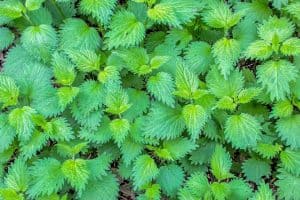 Nettle slurry is highly effective in preventing infestations of very common pests, such as aphids, mites, red spider mite, whitefly, larvae. mealybugs and some species of crickets, such as talpa or onion. It is important to emphasize that no variety of aphid supports its insecticidal effect.
Nettle slurry is highly effective in preventing infestations of very common pests, such as aphids, mites, red spider mite, whitefly, larvae. mealybugs and some species of crickets, such as talpa or onion. It is important to emphasize that no variety of aphid supports its insecticidal effect.
It is also widely used to prevent the appearance of fungi and diseases such as mildew, powdery mildew and rust.
It is a great stimulant for seed germination.
It is used as a phytofortifier and fertilizer for leaves and substrate.
It is also used during the growth stages. Although its use in early stages favors flowering, it is not highly recommended to use it as a fertilizer during this period.
How do we prepare nettle slurry?
Ingredients to make nettle purin
For its preparation you need:
- 10 liters of water, preferably rainwater. Avoid water with chlorine or high lime content
- 1 kg of fresh nettle, which you must collect before flowering. That is, 100 g of fresh nettle for every liter of water.
- 1 container large enough to deposit the ingredients.
4 Opinions NETTLE SPUR 1 LITER TRIPLE ACTION €15.50 View on Amazon Prices with VAT without transport
Last updated on 2022-07-26 / Affiliate Links / Affiliate API Images
Preparation of nettle slurry
To prepare it, follow these steps:
- Pull the leaves off the nettles, being very careful not to hurt yourself.
- If you plan to use rainwater, you will need to collect it well in advance.
- Place the nettles inside the container and add the water, so that it covers them completely. Stir it all up and leave the plants well submerged.
- Close the container and place it in a secluded and cool place. It is essential that you consider that, during the following days, the compound will give off a very strong and unpleasant aroma, due to its fermentation.
- Likewise, it will attract many flies, so it is not highly recommended to prepare it in apartments, terraces, balconies and places of common use and highly frequented. Try to do it in very remote places. In addition, it is easily impregnated. If you prefer, you can get ready-made concentrate and save yourself the hassle of preparing it.
- Let the nettle slurry ferment for ten days, stirring the mixture every third day.
- The extract is ready to be filtered when the bubbles disappear and a very thin film forms on the water.
- Strain the obtained extract and deposit it in bottles or carafes. For sifting you can use a filter or any cloth that allows you to separate the solids from the liquids.
- Store the bottles or jars with the liquid, tightly closed in a dark and cool place to prolong its useful life.
- Clever! The slurry is ready to be used. We recommend that you use it as soon as possible so that you take advantage of all its properties.
How is it applied to our crops?
The dose may vary, depending on the maceration time.
If the extract is very concentrated and fetid, it is best to dilute one part of the liquid in two parts of water and apply with a spray so that the drops adhere easily to the leaves.
If you want greater adherence, you can add a little neutral soap to the dilution.
The diluted can be stored in the refrigerator for 2 months before losing its repellent effect.
Some tricks!
- If used as a repellent, highly concentrated slurry should be diluted in water (preferably with more than 30 days of maceration) in a ratio of 19 parts of water to 1 part of slurry.
- The solution is applied daily for the first three days, and then applied again every 15 days for the rest of the year. Apply it, preferably, on the underside and top of the leaves.
- If it is used as a fertilizer, it is diluted in a ratio of 9 parts of water to 1 of concentrated manure.
- If you want to stimulate the germination of the seeds, before sowing them, soak them for 30 minutes in undiluted manure. You can also soak them in a solution of 19 parts water to 1 part slurry for 12 hours.
- If you are going to transplant seedlings or seedlings, you can soak the roots in a solution of 19 parts water to 1 part manure for 12 hours.
- To improve the rooting of the root system, spread a solution of 9 parts of water to 1 of concentrated slurry on the substrate.
- In the case of fungi, it is advisable to combine the treatment with horsetail slurry and spray every 15 days until the disease subsides.
- It is recommended that you carry out all these treatments in the morning, with the plants well hydrated from having watered them the day before. In this way, the culture will better absorb the extract.
Maybe you are also interested in:
- Neem oil or extract: What is it? How to prepare it? How can we use it?
- Potassium soap: what is it? How to prepare it? How to use?
Bibliography and references
-
[PDF] Slurry based on nettle (Urtica dioica) a natural alternative in the control of insects of the Coleoptera order, RN Ortega, R Alban, D Alfonzo – Revista …, 2009 – revista.aba-agroecologia.org.br
-
Effects of nettle slurry on lettuce plant growth, JP Cavigioli, M Oliver – 2018 – sedici.unlp.edu.ar
-
Effects of nettle slurry (Urtica dioica L.) on the vegetative development and production of organic potato (Solanum tuberosum L.) cultivation, J Royo López – 2017 – riunet.upv.es
-
[HTML] Urban gardens, ecological/organic agriculture, L Muñoz – agrohuerto.com
-
[PDF] Organic cultivation of citrus in the Mediterranean regions, AD Gento – Rural life, 2001 – mapa.gob.es
-
[PDF] Organic management of horticultural crops, S Vasquez, CL Cecilia, H Paillán… – INIA Bulletin-Institute of…, 2012 – library.inia.cl
-
[BOOK] Reconversion of farms to sustainable production. Interactive Methodology, RA Lee – 2003 – books.google.com

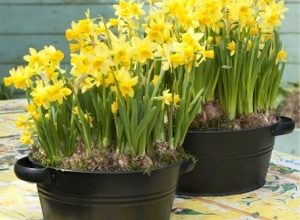
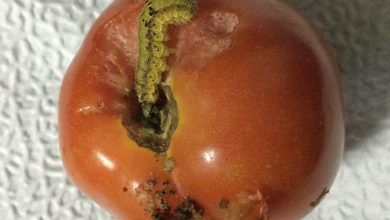
![Photo of How to Plant Oxalis Triangularis or Butterfly Plant: [Complete Guide]](https://www.complete-gardening.com/wp-content/uploads/2021/06/Oxalis-triangularis-planta-390x220.jpg)
